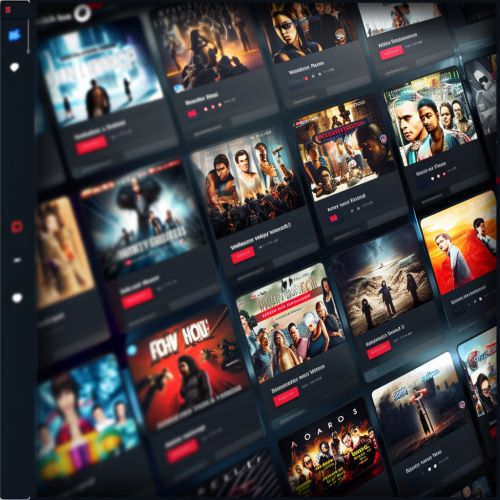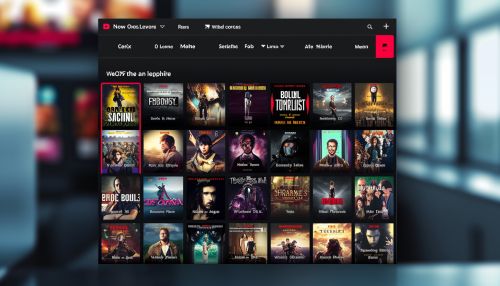Over-the-top media service
Definition and Overview
An Over-the-top (OTT) media service is a streaming media service offered directly to viewers via the internet. OTT bypasses cable, broadcast, and satellite television platforms, the companies that traditionally act as a controller or distributor of such content. It has emerged as a significant and rapidly evolving sector within the broader digital media landscape.
OTT media services encompass a broad range of content, including audio (such as radio broadcasts and podcasts), video (like TV shows and movies), and other media (like digital books and newspapers). These services are delivered over a variety of platforms, including desktop and laptop computers, gaming consoles, set-top boxes, smart TVs, and mobile devices like smartphones and tablets.
History and Evolution
The term "over-the-top" was first used in its current context around 2010, but the concept has roots dating back to the early days of the internet. Early pioneers of OTT content include services like Napster for music and YouTube for video, both of which disrupted traditional distribution channels by allowing users to directly access media content over the internet.
The OTT landscape has evolved significantly since those early days, with a proliferation of services and platforms. Major players in the OTT space now include companies like Netflix, Amazon Prime Video, Hulu, and Disney+, all of which offer extensive libraries of video content that can be streamed over the internet.
Business Models
There are several business models that OTT services can adopt, each with its own set of advantages and challenges. These include subscription-based models (SVOD), advertising-based models (AVOD), and transactional models (TVOD).
Subscription-based models (SVOD) involve users paying a recurring fee to access a library of content. This model is used by many of the major OTT services, including Netflix and Amazon Prime Video.
Advertising-based models (AVOD) offer free content to users, supported by advertising. This model is used by services like YouTube and Hulu's free tier.
Transactional models (TVOD) involve users paying for individual pieces of content. This model is used by services like iTunes, where users can buy or rent individual movies or TV episodes.
Technology and Infrastructure
OTT services rely on a complex infrastructure to deliver content to users. This includes content delivery networks (CDNs), which are geographically distributed networks of servers that work together to provide fast delivery of internet content.
OTT services also make use of streaming protocols, which are methods of delivering media over the internet. These protocols, such as HTTP Live Streaming (HLS) and Dynamic Adaptive Streaming over HTTP (DASH), allow for the delivery of media that can adapt to the bandwidth and capabilities of the user's device.
Regulation and Challenges
OTT services operate in a rapidly changing regulatory environment, with laws and regulations varying widely by country. Some of the key regulatory issues facing OTT services include net neutrality, copyright law, and data privacy.
Net neutrality is the principle that all internet traffic should be treated equally, without any discrimination or preference given to certain types of content. This principle is crucial for OTT services, as any prioritization of internet traffic could impact the quality of service.
Copyright law is another significant challenge for OTT services, as they must navigate complex licensing agreements to legally distribute content. This is particularly challenging in the global OTT market, where licensing agreements often vary by country.
Data privacy is a growing concern in the digital age, and OTT services are no exception. These services collect vast amounts of user data, which can be used to personalize content and advertising. However, this data collection also raises significant privacy concerns, and OTT services must comply with a range of data protection laws.
Future Trends
The OTT market is rapidly evolving, with several key trends shaping the future of the industry. These include the growth of original content, the rise of live streaming, and the increasing importance of data analytics.
Original content has become a key differentiator for OTT services, with companies like Netflix and Amazon investing billions in creating their own movies and TV shows. This trend is likely to continue, as original content not only attracts new subscribers, but also helps to retain existing ones.
Live streaming is another growing trend in the OTT space. While OTT has traditionally been associated with on-demand content, live streaming offers a new way for viewers to engage with content in real time. This is particularly relevant for sports and events, which are often best enjoyed live.
Data analytics is increasingly important in the OTT industry, as it allows services to better understand their users and personalize their offerings. By analyzing viewing habits, demographic information, and other data, OTT services can make more informed decisions about what content to offer and how to market it.
See Also
Streaming Media Internet Television Video On Demand
Categories


